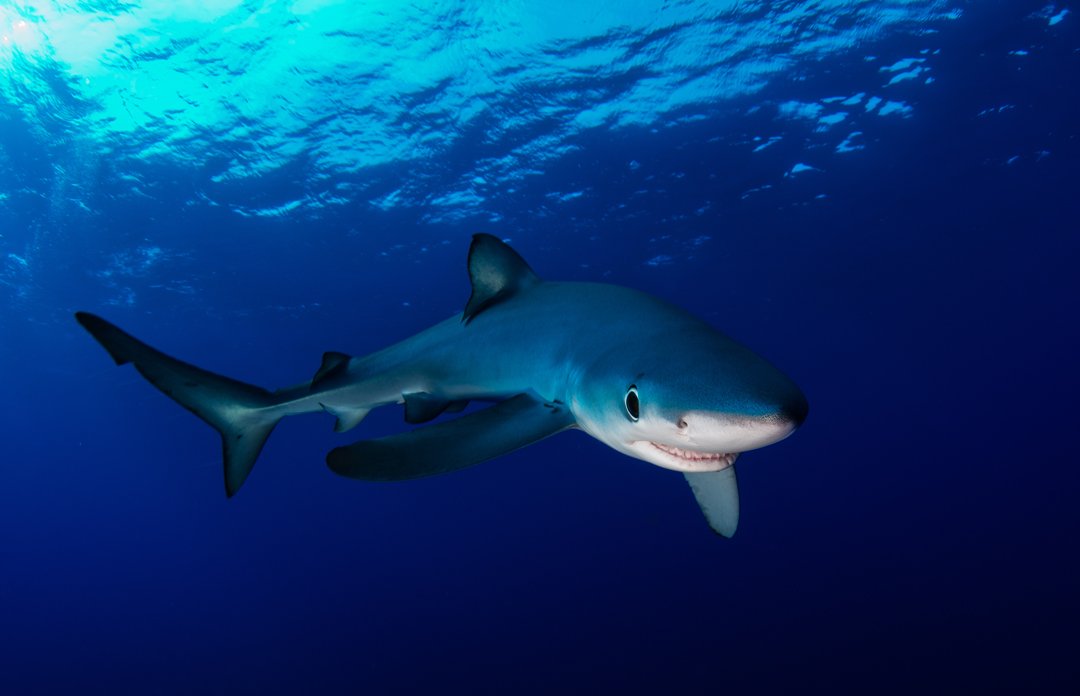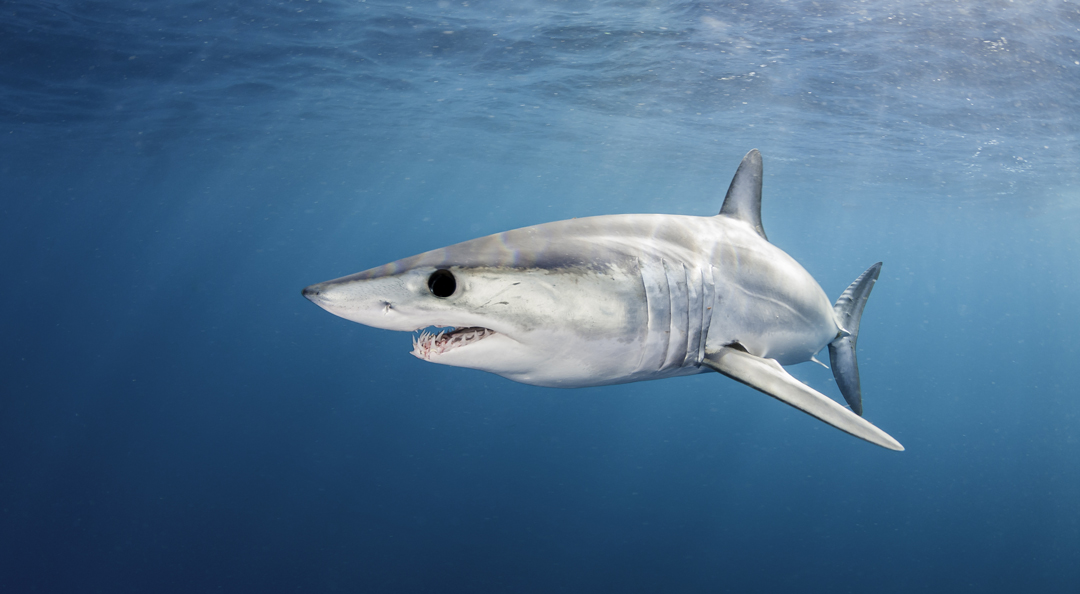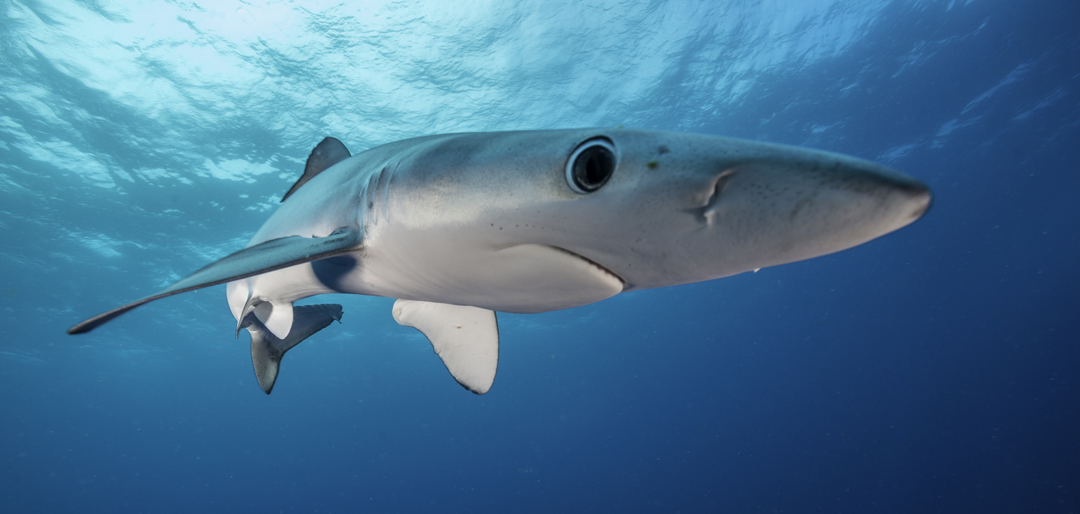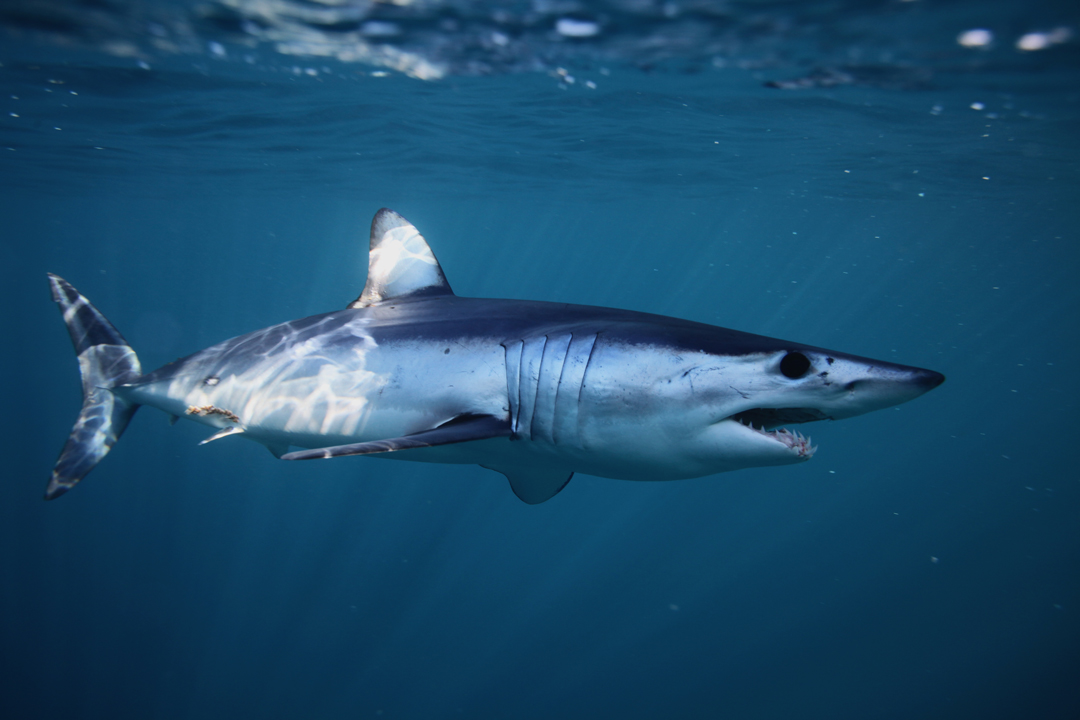Q&A with David Sims
Professor David Sims is a Marine Biological Association Senior Research Fellow and professor at the University of Southampton. He heads up the Global Shark Movement Project, a collaborative scientific drive that brings together data from a global marine research community. The goal? To use shark tracking and environmental data to improve our understanding of the ecology of sharks and inform policy to protect their populations. This week, David and a team of scientists published their latest findings in the journal Nature. Their results show that the footprint of industrial longline shark fisheries overlaps with critical pelagic shark habitats, leaving little refuge for these species in the open oceans. We chatted to David in the wake of this landmark publication to find out more about what this means for shark fisheries management, conservation and the future of big datasets and satellite tracking technology.

- This study is the result of significant collaboration and the collation of big datasets: how key do you believe collaboration is to solving some of the challenges highlighted in this paper?I think the only way we can answer questions about shark ecology and the impacts of fisheries on shark hotspots worldwide is to work collaboratively at the global scale. No single research group could hope to collect sufficient data to perform the type of analyses that provide sound scientific evidence to inform shark conservation in the High Seas. It’s something for which we all need to work together.
- These results are alarming: what would your recommended first step be to policymakers based on this foundational blueprint?I hope that the maps of shark hotspots and their levels of exploitation lead to serious discussion about the benefits of large-scale marine protected areas. This should focus on the hotspots that we identify in our paper as being most at risk. Some pelagic shark populations are in dire need of immediate conservation management, not minimal action that maintains business-as-usual catch rates.

Blue shark. Photo © Joost van Uffelen | Shutterstock
- What sparked the idea behind such an ambitious study?Like many crazily ambitious shark studies, ours started during a lull in activity while on a tagging field trip as our team relaxed around a swimming pool! My colleague Dr Nuno Queiroz and I were already satellite tracking blue and shortfin mako shark movements relative to the tracks of pelagic longline vessels in the North Atlantic (see our paper here). And I’d just returned from a workshop visit to Professor Carlos Duarte’s lab at KAUST, where he had obtained a global dataset of fishing vessel tracks. So I asked Nuno: “What if we extend our North Atlantic study globally, by building a worldwide shark tracking community to calculate global overlap levels with fisheries?” Without hesitation, his answer was yes – although not without a hint of doubt: “Can we do that?”Within 6 months of that poolside conversation, we had assembled an international team of over 150 scientists in 100 institutes across 26 countries. How? Well, we found the shark scientists we approached to be incredibly interested in and positive about becoming involved. There was palpable enthusiasm to provide new scientific insights to help conserve pelagic sharks. We’d all experienced how difficult it often was to catch enough sharks to tag, because in some areas, shark abundance was clearly declining. So it was like pushing at an open door: the community were ready and waiting to all work together.It’s true to say that without the vision, commitment and trust of all the international team members, this study and the Global Shark Movement Project would never have got off the ground. But now we’ve all built a ‘movement about shark movement’ that will go on to provide more ground-breaking results of conservation relevance.

Mako shark. Photo © wildestanimal | Shutterstock
- Was there any particularly surprising result that stood out for you?The striking result, and its most worrying aspect I think, is the sheer scale of the overlap of fishing effort centred on shark hotspots. We didn’t realise its intensity and scale worldwide, nor that there would be a near entire overlap with the tracked range of two species. The blue and shortfin mako sharks are commercially valuable and account for over 90% of the pelagic sharks caught by longline fisheries.In particular, the future looks dismal for the shortfin mako in the North Atlantic. Stock assessments show that it is overfished and endangered according to the IUCN Red List, but management has been slow to act, and conservation measures are minimal. And now our results show that the major hotspots of shortfin mako in the North Atlantic are almost entirely overlapped for nearly half the year. This means that they have limited refuge from overfishing across their range. These mako hotspots might not exist in the future unless action is taken to manage High Seas fishing for them. Now is the time.

Photo © wildestanimal | Shutterstock
- The scale of this study is global, but its results will have (in most cases) to have regional and local level policy implications: do you see this as a challenge?Policy for shark conservation is always a challenge because they are commercially valuable, and large profits can be made from fins and meat. However, within national jurisdictions (Exclusive Economic Zones), shark management measures are well developed and enforced in many countries. The main challenge will be to extend this level of policy into ocean regions on the High Seas. For that to happen, we need an international treaty aimed at protecting ocean biodiversity.
- How do you hope these findings will direct shark conservation efforts in our High Seas?It is our hope that this study will focus attention on pelagic shark hotspots. It could provide the starting ‘blueprint’ needed to assess how large marine protected areas (MPAs) could be used to conserve them. Our maps will help select hotspots where large MPAs for sharks could be sited. We hope to feed these results into the United Nations (UN) negotiations for a High Seas treaty in the coming year.
Read the Save Our Seas Foundation update on the paper here.

Photo © Alessandro De Maddalena | Shutterstock
